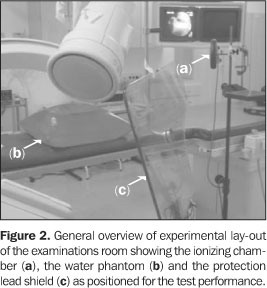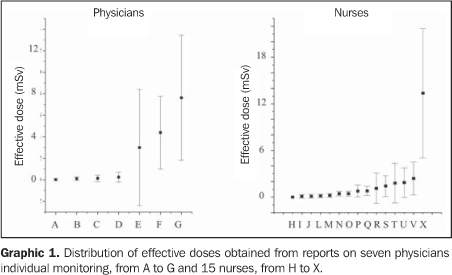OBJECTIVE: This study aims to evaluate the effective ionizing radiation dose received by staff involved in interventional vascular procedures to establish parameters for comparison between the data obtained with an ionization chamber and with the dosimeters used for individual monitoring. MATERIALS AND METHODS: The evaluation was performed in a cardiac catheter laboratory and air kerma rate was measured in a real working environment, in the positions occupied by physicians and nurses, with and without the lead glass shield. The number of tests performed in the laboratory was taken into consideration and most common projections and radiographic parameters were selected. Conversion factors founded in the literature were applied for the effective dose estimation. RESULTS: The values found in the effective dose and in the dosimetry report were rather consistent. Additionally, it was observed that the use of the lead glass shield reduces in up to 97% the doses received by the professional and therefore it must be routinely used. CONCLUSION: The reported values are representative but cannot be assumed as a reproduction of individual monitoring conditions, although they are valid for comparison purposes and as a guidance for dosing optimization.
Occupational exposure; Dosimetry; X-rays; Hemodynamics






